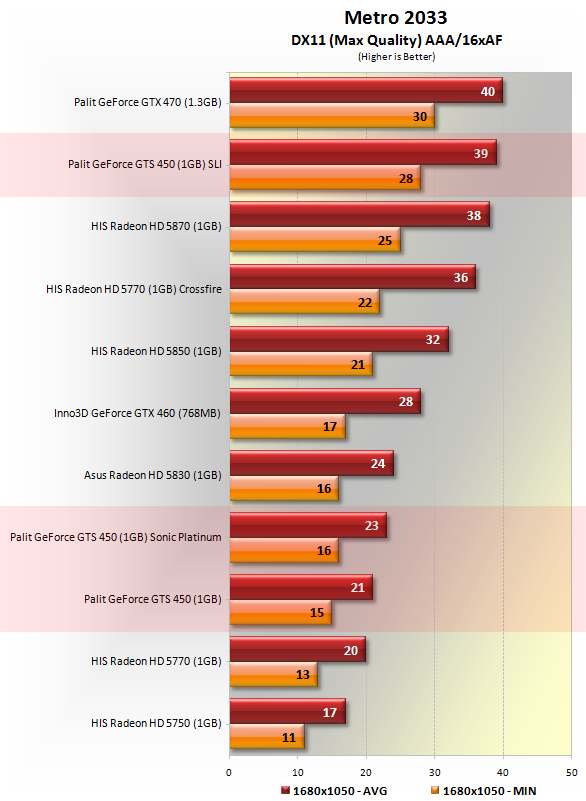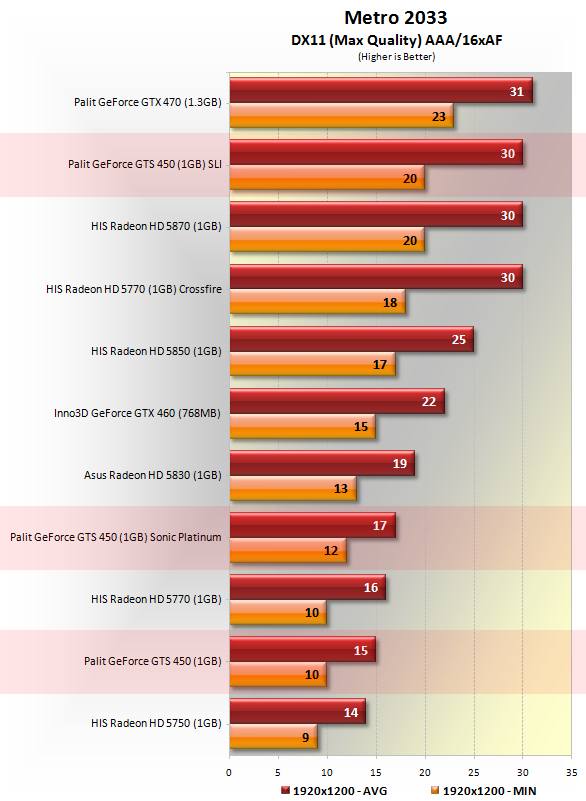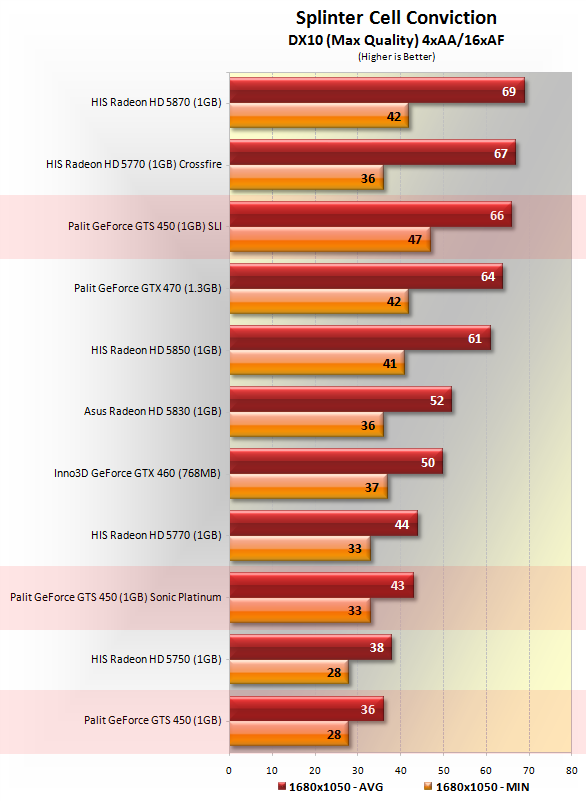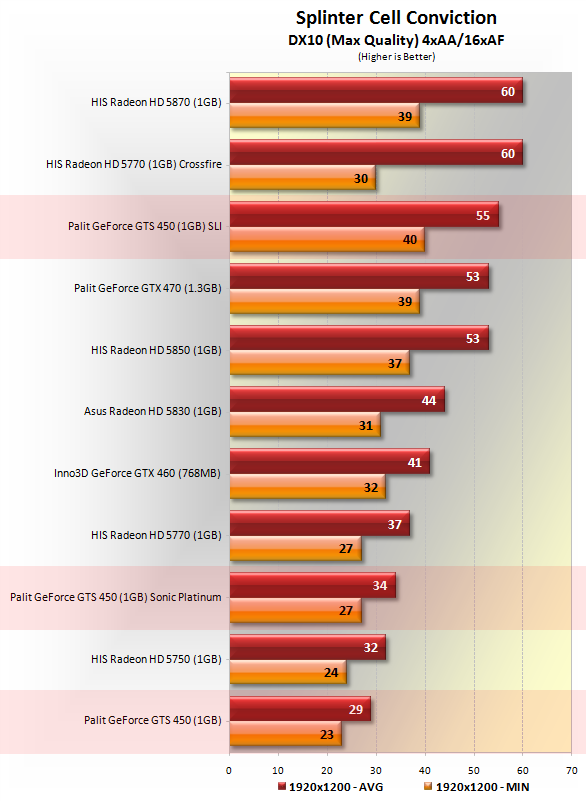Benchmarks: Metro 2033, Splinter Cell Conviction
Metro 2033 has no built-in benchmark tool so we have relied on Fraps to gauge GPU performance. The "Chase" level was used where we recorded the first 60 seconds of the cart ride. The game was tested using DirectX 11 though Tessellation was disabled as it hammered performance too severely. Anti-aliasing was disabled and instead we used the default analytical anti-aliasing with 4xAF.


Most graphics cards struggle with Metro 2033 and when using the DirectX 11 mode with AA/16xAF enabled along with the maximum visual settings the lower-end/mid-range cards perform very poorly in our test. Although we are running in the DX11 mode the features have actually been disabled to try and produce a scenario where we see playable frame rates.
The GeForce GTS 450 averaged 21fps making it faster than the Radeon HD 5770 while only slightly slower than the Radeon HD 5830. The Palit GTS 450 Sonic Platinum was 10% faster than the standard GTS 450 rendering an average of 23fps.
At 1680x1050 the GeForce GTS 450 SLI configuration averaged 39fps, an 86% performance boost over the single card. This also meant they were able to nearly match the GeForce GTX 470 and edge out the Radeon HD 5870.
Splinter Cell: Conviction Benchmarks
Splinter Cell: Conviction requires Fraps to measure gameplay performance. For this game we used the first level "Merchant's Street Market" where we recorded 60 seconds of gameplay. The highest visual quality settings were used along with 4xAA/16xAF.


Splinter Cell Conviction is a much more GPU friendly game and with all graphical settings maxed out including 4xAA/16xAF we still saw 36fps averaged by the GeForce GTS 450 at 1680x1050. The Palit GTS 450 Sonic Platinum graphics card was 19% faster with an average of 43fps being rendered, falling a single frame per second short of matching the Radeon HD 5770.
Adding a second card allowed for an average of 66fps to be rendered, a healthy 83% performance increase.